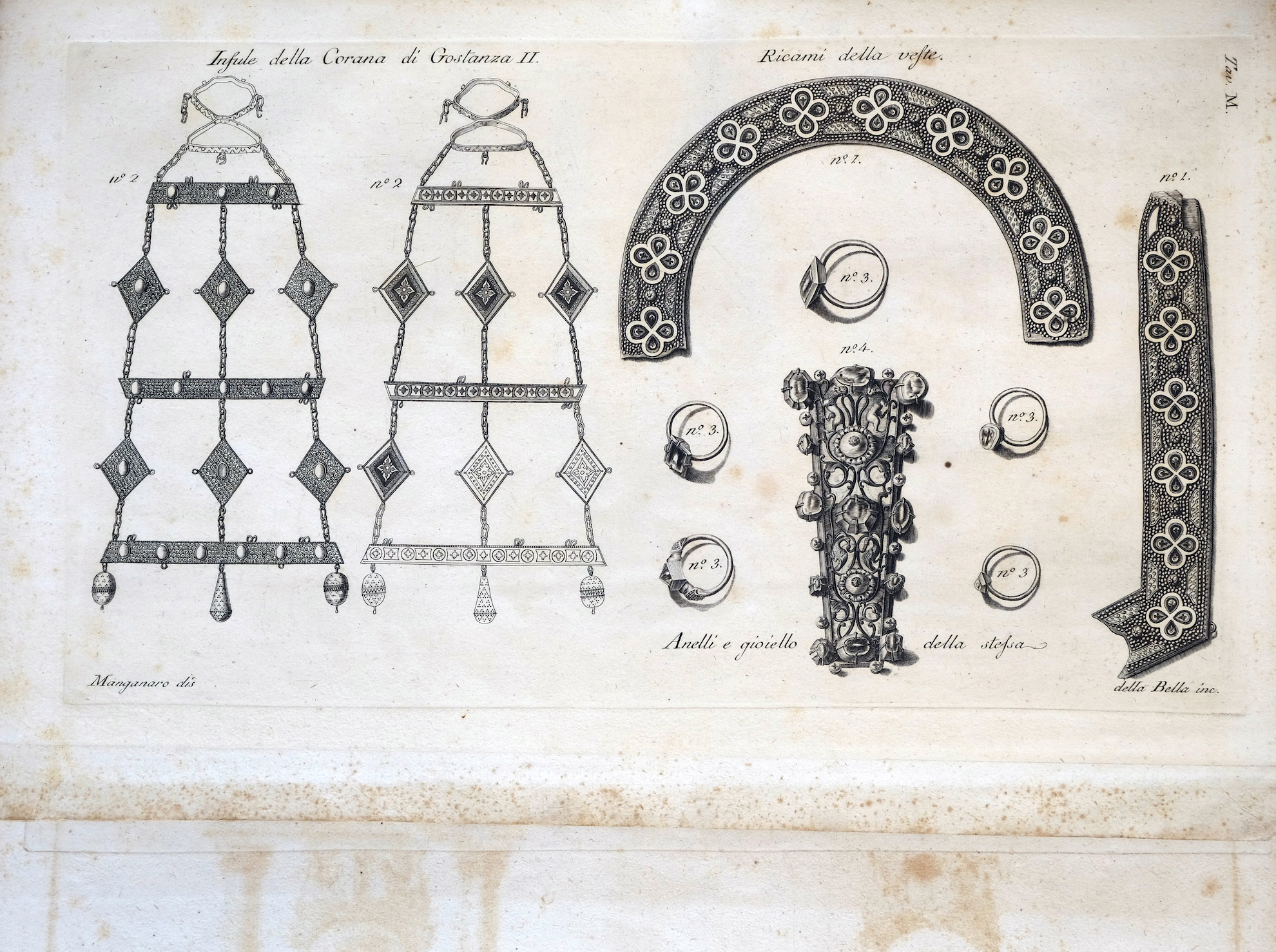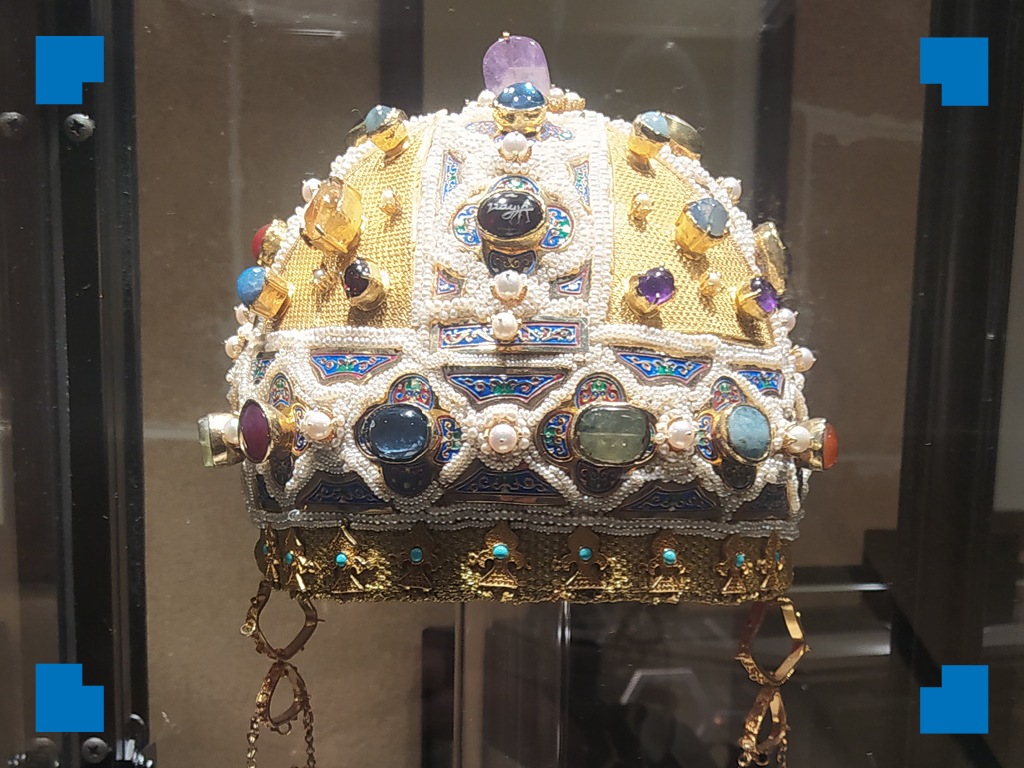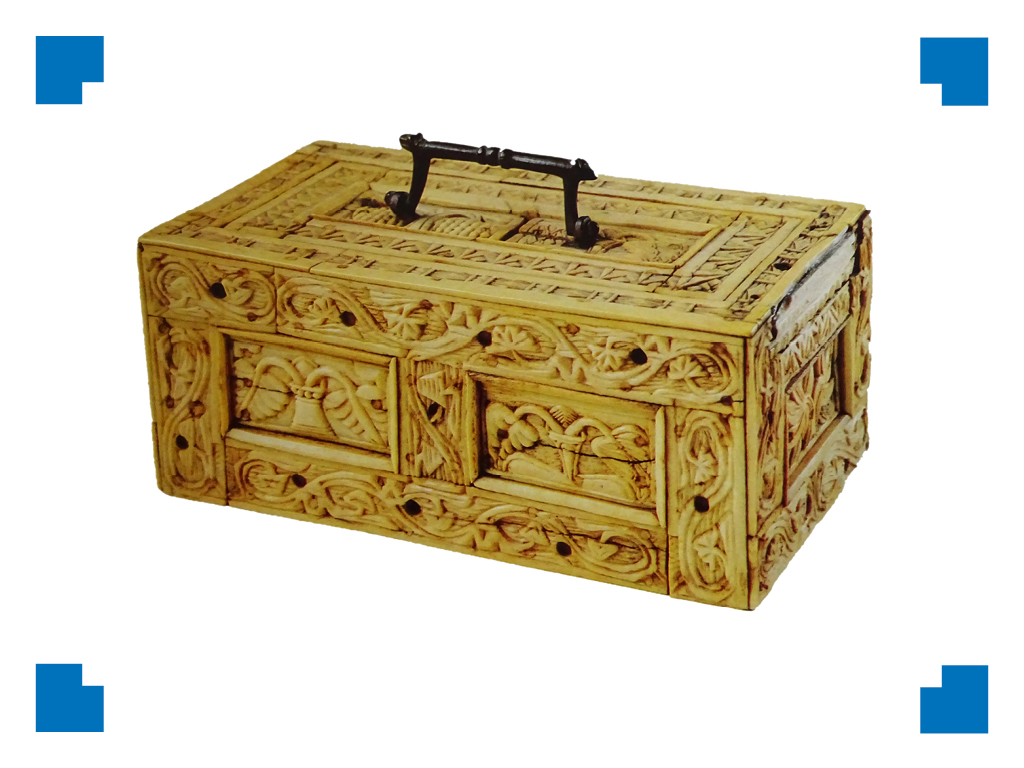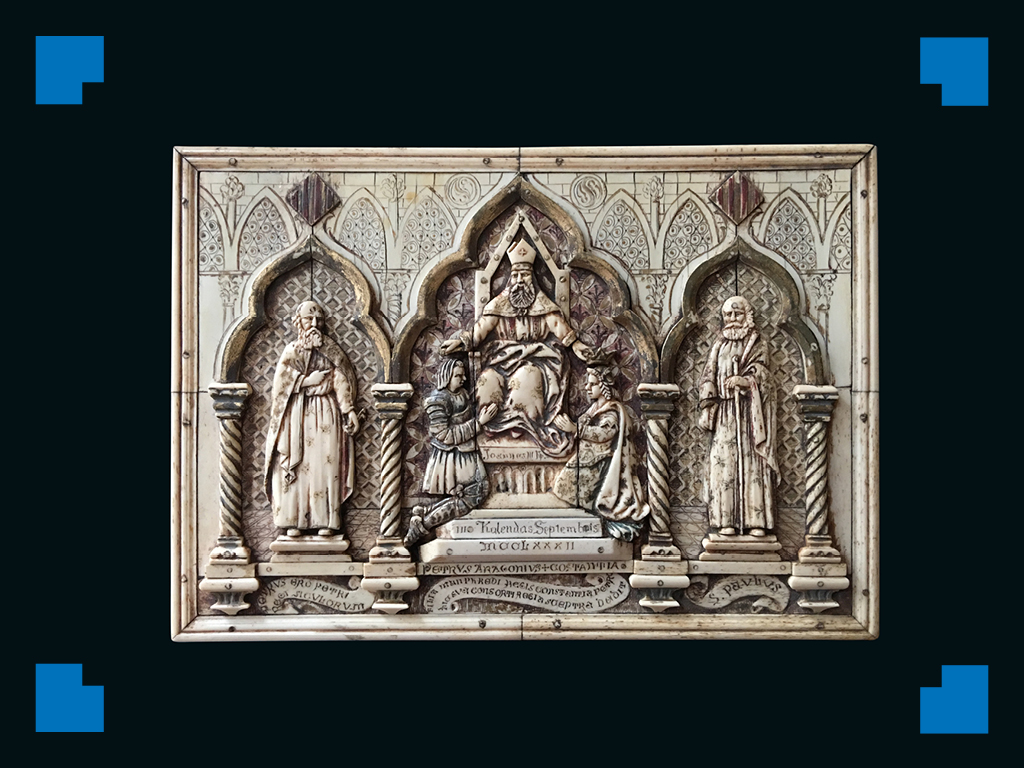
21. The royal sepulchres of the Cathedral of Palermo recognized and illustrated
Francesco Daniele, Naples 1784
The royal sepulchres of the Cathedral of Palermo recognized and illustrated,
Plate M (funerary equipment of the Empress Constance of Aragon)
printed book, engraving and etching by Melchiorre Della Bella on drawings by Camillo Manganaro (46×31,5 cm)
Palermo, Library of the Sicilian Regional Assembly, A 945.823/34
In 1781, during the neoclassical renovation of the Cathedral of Palermo, the royal and imperial sarcophagi of the Cemetery of the Kings were dismantled and inspected. The opened tombs were those of of Roger II of Hauteville, first King of Sicily; Henry VI of Swabia, Emperor of the Holy Roman Empire; his wife Empress Constance of Hauteville, daughter of Roger II and heir to the Kingdom of Sicily; Empress Constance of Aragon, wife of Frederick II of Swabia; and Frederick himself, son of Henry VI.
Three years later, in 1784, the royal historian Francesco Daniele (1740-1812) published the chronicle of the extraordinary findings by will of the sovereign of the time, Ferdinand III of Bourbon, King of the Two Sicilies. The volume had an extraordinary resonance and increased the interest in the history of the Norman-Swabian monarchy and in the Sicilian medieval monuments, in line with the Romantic taste for revivals (Focus 21).
The volume was accompanied by 18 illustrative plates. Three engravings were dedicated to the funerary outfit equipment of Empress Constance of Aragon, which included the silver plate on display (cat. 4), a gorgeous crown with its pendants (cat. 26), five rings (only the three ones here exhibited are left, cat. 3), fragments of the galloons of her robes (cat. 27) and an element of a neckpiece (choker, later lost).
Focus – The Creation of the Norman Myth in the Nineteenth Century, Royal Patronage in Palermo
Following the opening of the royal tombs in the Cathedral of Palermo in 1781 and the English influence on Sicily (due to the French occupation in Naples in the first and second decades of the 19th century), the rediscovery of Palermo’s medieval past underwent a rapid growth.
The interest in the history of the Kingdom of Sicily, forcibly abolished in 1816 by King Ferdinand Bourbon IV of Naples, for opposing political reasons found fertile ground in numerous Norman-Aragonese revival operations.
An example is the pseudo-medieval tower that future King Francis I of the two Sicilies had built by 1815 in the Royal hunting ground of Boccadifalco in Palermo by architect Gaetano Bernasconi. Gothic became the language of royal power.
The Bourbons, therefore, in order to legitimize their shaky crown, promoted the restoration of some of the main symbolic architecture of what had once been the capital of the kingdom. Thus, after the devastating neoclassical renovation of the cathedral, the king commissioned in 1802-1803 architect Giuseppe Venanzio Marvuglia to camouflage the dome in neo-Gothic style to avoid the stark contrast with the exterior of the monument.
The work was never accomplished, but from 1826 the ruined baroque bell tower was replaced by architect Emmanuele Palazzotto with a new architecture, which in 1835 was defined “Arab-Norman”.
Similar interventions in the Royal Palace were commissioned to architect Nicolò Puglia by King Ferdinand II of the two Sicilies (son of the previous one), with a rich program involving the Pisana tower, the south-western prospects, the recovery and remaking of the mosaics of the “Hall of King Roger” (recorded by traveler Henry Gally Knight, cat. 22) and the creation of a neo-gothic chapel for the following sovereign.
In the same years, the restoration of the mosaics of the Palatine Chapel continued and new ones were produced, together with a cycle of three paintings related to the Norman heroic past in the vault of one of the main halls of the palace.
Meanwhile, after the 1811 fire inside the Cathedral of Monreale (cat. 15, 16), Ferdinand II himself promoted restoration works on the entire structure thanks to which the basilica was restored as we see it today.


